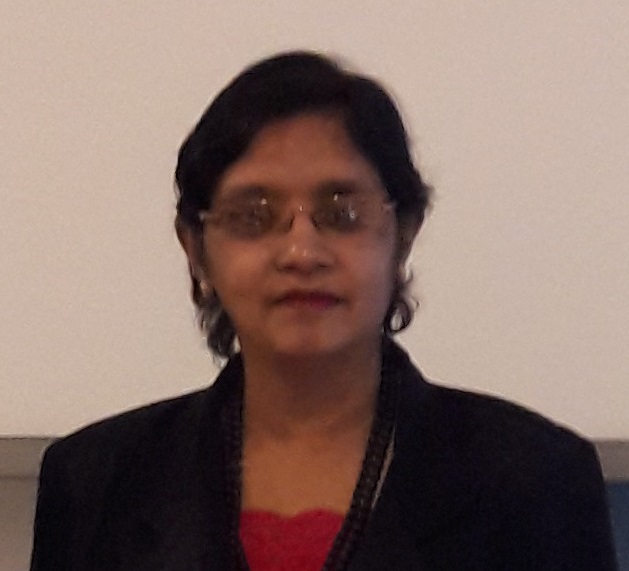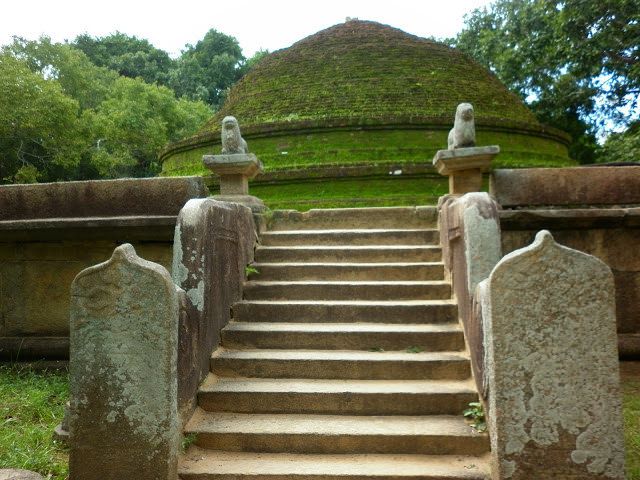Magul Maha Viharaya – venue of a historical event
By Arundathie Abeysinghe
 Situated in Lahugala in Ampara District, Magul Maha Viharaya is an ancient Buddhist Temple linked to a historical event. The Temple is located on the northern edge of *Lahugala National Park.
Situated in Lahugala in Ampara District, Magul Maha Viharaya is an ancient Buddhist Temple linked to a historical event. The Temple is located on the northern edge of *Lahugala National Park.
Magul Maha Viharaya (meaning “the Wedding Temple” in Sinhala) is an unusual name for a Buddhist Temple. According to legends, the premises of the Temple had also been the location where King Kavantissa (205-161 BC who ruled the Kingdom of *Ruhuna) had married brave *Princess Viharamahadevi, the daughter of King Kelanitissa of *Maya Rata. According to legends, the name of the Temple is linked with the Royal Wedding that had taken place in the premises of the Temple. According to scholars, the intricately carved poruwa (wedding altar) in the premises of the Temple is evidence that a Royal Wedding had taken place many centuries ago. This poruwa had later served as the enclosure for the *Bo tree. The foundations of the Magul Maduwa (Wedding Hall) where the wedding ceremony had taken place can still be seen at the premises of the Temple.
There are ruins of a Royal Palace, a monastery, dagobas (stupas), ponds, an Image House (with a standing Buddha House), bo maluwa (a place where a Bo Tree is situated), a vatadage (circular relic house), a bathing pond for Buddhist Monks as well as a moonstone in the Temple Complex. The moonstone (sandakadapahana in Sinhala) of the Temple Complex is elaborately sculptured and dates to the *Anuradhapura Era. The stupa of Magul Maha Vihara is built on a high terrace and there are three staircases leading to it with images of grand lion guardians at the top of these stairs.
The moonstone in the Temple Complex is different from other moonstones of the Anuradhapura Era as well as moonstones in different parts of Sri Lanka as the outer ring of the moonstone has a carving of mahouts riding elephants.
The entire Temple Complex including the ruins is surrounded by the forests of Lahugala National Park.
There is a causeway to reach the Temple situated across a lotus filled reservoir which surrounds the entire Temple Complex, a mesmerizing sight.

According to some scholars, the Temple had been built in the 2nd century BC during the period of King Kavantissa. But some scholars are of the view that the Temple had been built by King Dhatusena (463-479 AD) of Anuradhapura as there is a stone inscription at the site of the Temple dating back to the 14th century. The Temple had been renovated by many rulers after its establishment.
History of the Temple and the Royal Wedding is a historical event. According to legends, King Kelanitissa had committed a great sin by punishing an innocent virtuous Buddhist Monk. According to legends, the gods created strong waves inland to destroy the country (Sri Lanka). To save the country from raging waves of the Indian Ocean (from the wrath of antagonized gods), *Princess Viharamahadevi, legendary heroine volunteered to sacrifice her life to the sea by drifting on a boat. The boat the princess traveled had swept ashore safely at a location near Magul Maha Viharaya in Pottuvil

The Temple is an archaeologically protected heritage monument of Sri Lanka.
Location: The site is situated about 800 meters south of A4 Road west of 307 kilometer post.
- Ampara – Located in the Eastern Province of Sri Lanka 360 kilometers east of Colombo, Ampara is the main town of Ampara District.
- Anuradhapura – A major city in Sri Lanka (former Ceylon), the capital of Anuradhapura District. Anuradhapura was one of the ancient capitals of Sri Lanka and is famous for its well-preserved ruins of Sri Lankan civilization. Founded in the 4th century, Anuradhapura was the capital of Sri Lanka until the beginning of the 11th Anuradhapura is considered sacred to Buddhists and there are monasteries, stupas within an area of 40 square kilometers, Situated 205 kilometers north of Colombo, Anuradhapura was declared as the “Sacred City of Anuradhapura” and a World Heritage Site by UNESCO in 1982.
- Arugam Bay – A famous surfing destination on the east coast of Sri Lanka and popularly known as “Arugam Kuda” by locals.
- Bo Tree – Also known as Bodhi Tree is a specific sacred fig tree (Ficus religiosa) under which the Buddha had attained *Enlightenment at Bodh Gaya in Bihar, India.
- Ceylon – Sri Lanka gained Independence from British Colonials in 1948. In 1972, Ceylon became a republic within the Commonwealth and Ceylon was thereafter known as Sri Lanka.
- Enlightenment – In Buddhism, Enlightenment is when a Buddhist finds the truth about life and stops being reborn as he/she has reached *Nirvana.
- Kelaniya – A suburb of Colombo in the Western Province of Sri Lanka, Kelaniya is famous for the well-known Buddhist Temple Kelaniya Raja Maha Viharaya (Kelaniya Temple) built on the banks of *Kelani River.
- Kelani River – One of the major rivers in Sri Lanka and is 145 kilometers long.
- Kirinda – A coastal village in Sri Lanka located in the Southern Province.
- Lahugala National Park – Situated in the Eastern Province of Sri Lanka, the Park is the smallest National Park in the country. But it is one of the most significant conservation areas for Sri Lankan elephants (Elephas maximus maximus) and endemic birds.
- Maya Rata – Also known by many as the Kingdom of Dakkinadesa, was a medieval era Sinhalese Kingdom which was located in the western region of Sri Lanka. The capitals of Maya Rata were *Kelaniya and *Panduwasnuwara. The boundaries of the Kingdom are Deduru Oya from North and Kalu Ganga (Ganga meaning River) from south.
- Nirvana – It refers to a release from the cycle of death and rebirth, the ultimate spiritual goal of Buddhism.
- Panduwasnuwara – Ancient capital of *Ceylon, situated in Kurunegala District, it had been the controlling center known as Parakramapura in the 12th century when it was ruled by King Parakramabahu I (1123-1186).
- Pottuvil – Situated about four kilometers from popular surfers’ paradise *Arugam Bay, Pottuvil is a town in the *Ampara District of Sri Lanka and located on the eastern coast of Sri Lanka. Pottuvil is also known as Pothuvil or Poththuvil.
- Princess Viharamahadevi – She was the daughter of King Kelanitissa and the Queen consort of King Kawantissa who was known as Queen Viharamahadevi after marriage. Queen Viharamahadevi was the mother of King Dutugemunu and Prince Saddhatissa. According to legends, the innocent Princess sacrificed her life to the sea to stop waves which were flooding inland. But when the boat was drifted to the sea, the sea had become calm and the boat had drifted inland saving the Princess. King Kawantissa had been impressed by her bravery and got married to her. The actual landing place of the boat is disputed by many scholars; according to some it is *Pottuvil, whereas some are of the view that it is *Kirinda. Yet, both Pottuvil and Kirinda belonged to Ruhunu Kingdom in the past.
- Ruhunu Rata – A region of present Southern, *Uva and Eastern Sri Lanka, it was also known as Kingdom of Ruhuna, the center of a thriving civilization.
- Uva Province – This is the fourth largest province in Sri Lanka bordered by Central, Eastern and Southern provinces.







